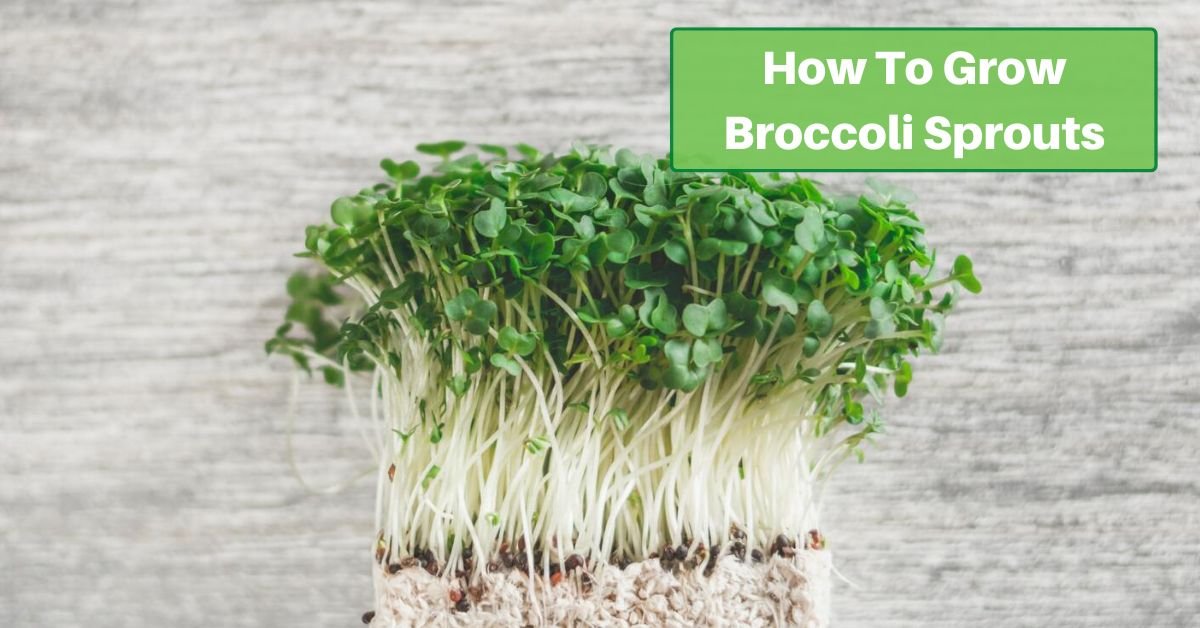Broccoli sprouts are tiny, nutrient-packed powerhouses that can be easily grown in your garden. These flavorful sprouts are the immature version of the familiar broccoli (Brassica oleracea). Most importantly, they’re known for their exceptional health benefits!
This guide will explore how to grow broccoli sprouts in your garden, from selecting the right seeds to harvesting these nutritious greens.
Understanding Broccoli Sprouts
Broccoli sprouts are the young seedlings of the broccoli plant. They are sometimes called “baby broccoli” or “broccolini,” since they’re miniatures of the mature broccoli florets. These sprouts are rich in essential nutrients, particularly sulforaphane, a potent antioxidant known for its potential health benefits, including cancer prevention and detoxification.
Selecting Broccoli Sprout Seeds
Successful broccoli sprout cultivation starts with choosing high-quality seeds. Look for seeds labeled for sprouting; these are free from pathogens that can be harmful if consumed raw. These seeds are found at garden centers, health food stores, or online retailers. Ensure the seeds are fresh, within their expiration date, and free from any signs of damage or contamination.
Sprouting Container and Soil
You can grow broccoli sprouts in shallow containers, trays, or garden beds.
Choose a clean container with drainage holes to avoid waterlogging. Fill the container with a well-draining, seed-starting mix or potting soil. It’s crucial to maintain a sterile environment to prevent the growth of harmful bacteria.
Planting Broccoli Sprout Seeds
Start by evenly spreading the broccoli sprout seeds over the soil’s surface in your chosen container. You don’t need to bury the seeds; it’s enough to gently press them into the soil so that they have good contact. Keep the seeds in a single layer so they don’t become overcrowded.
Watering and Providing Adequate Moisture
After planting the seeds, water the soil gently but thoroughly. Maintain consistent moisture by misting the soil or using a spray bottle; this also helps you avoid disturbing the seeds. You want to keep the soil evenly moist but not waterlogged. Place the container in a location with indirect sunlight or under a grow light.
Maintaining Proper Air Circulation
Broccoli sprouts need proper air circulation to prevent mold or bacterial growth. Cover the container with a breathable cloth or mesh, secured with a rubber band or twine to ensure this. Place the container in a well-ventilated area with indirect sunlight. Avoid exposing the sprouts to direct sunlight to keep them from drying out.
Rinsing and Draining
Rinse the broccoli sprouts twice a day with cold, clean water. Use a gentle flow of water to remove any residual seed hulls or potential contaminants and provide the sprouts with essential moisture. After rinsing, allow the excess water to drain completely from the container. Position the container at a slight angle to encourage proper drainage.
Harvesting Broccoli Sprouts
Broccoli sprouts are usually ready for harvest in about 4-7 days, although this timeline may vary depending on environmental factors.
When the sprouts reach your desired length, typically 1-2 inches, it’s time to harvest them. Cut the sprouts just above the soil level using clean scissors or a sharp knife.
Storing and Enjoying Broccoli Sprouts
Freshly harvested broccoli sprouts can be stored in an airtight container in the refrigerator for up to a week. Ensure they are thoroughly dry before storing to prevent moisture-related spoilage. Add them to salads, sandwiches, wraps, and smoothies to enjoy their health benefits.
Troubleshooting Common Issues
While growing broccoli sprouts is relatively straightforward, here are some common issues to watch out for:
- Mold: Mold growth can occur if the sprouts are not adequately rinsed and drained or if they are exposed to too much moisture. To prevent mold, ensure proper ventilation and drainage.
- Seed Contamination: Always use seeds specifically labeled for sprouting to avoid potential pathogens. Additionally, keep the sprouts and soil clean throughout the sprouting process to prevent contamination. Young plants like these are weaker and more prone to issues.
- Leggy Sprouts: If your sprouts are too long and leggy, it may be due to insufficient light. Ensure they receive indirect sunlight or use a grow light for adequate illumination during the growing process.
Cultivating broccoli sprouts in your garden is a simple yet rewarding journey. It allows you to enjoy these nutrient-packed greens’ fresh, crisp goodness. You can grow broccoli sprouts right in your outdoor space with quality seeds, proper care, and the steps outlined in this guide!









